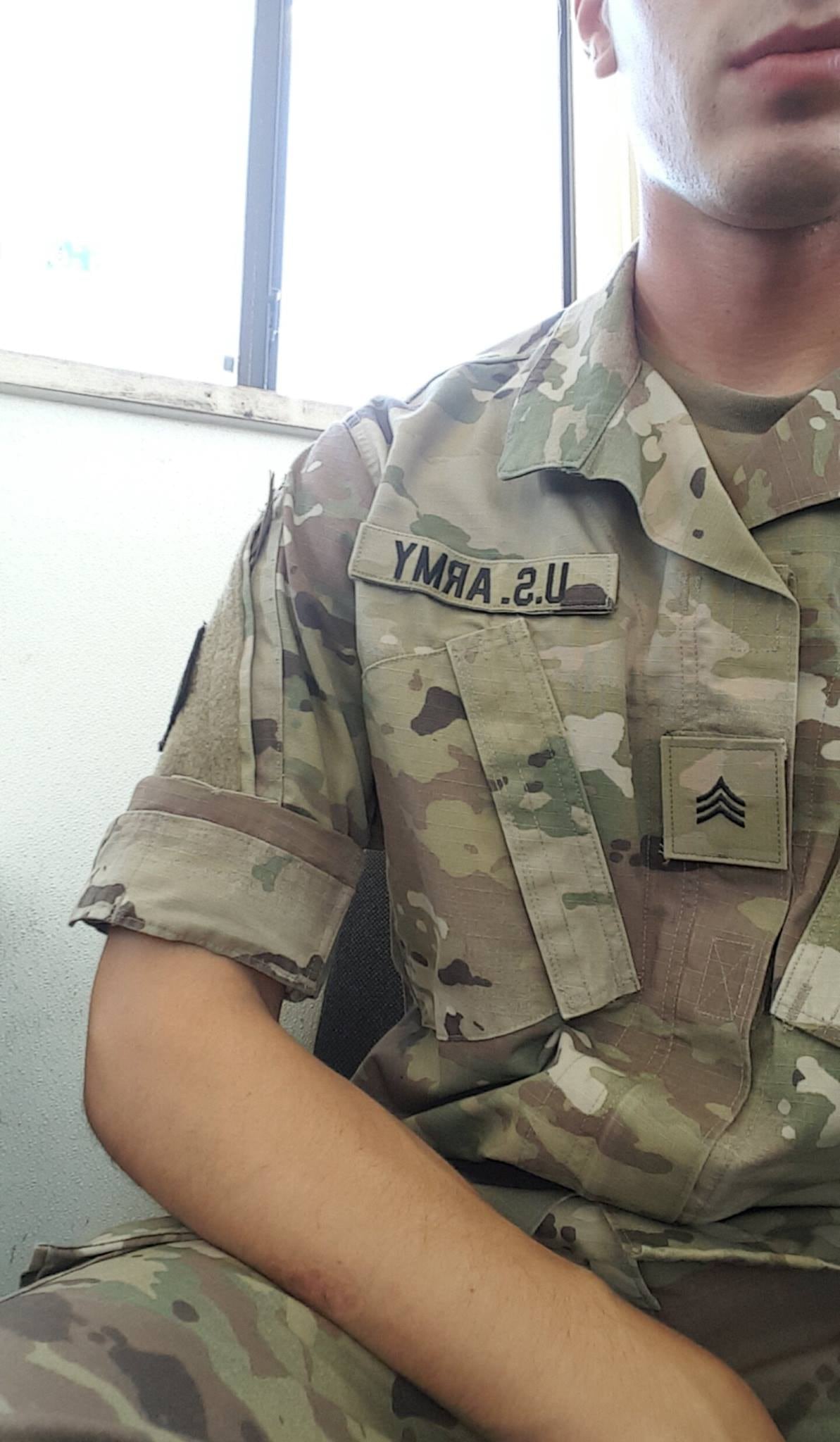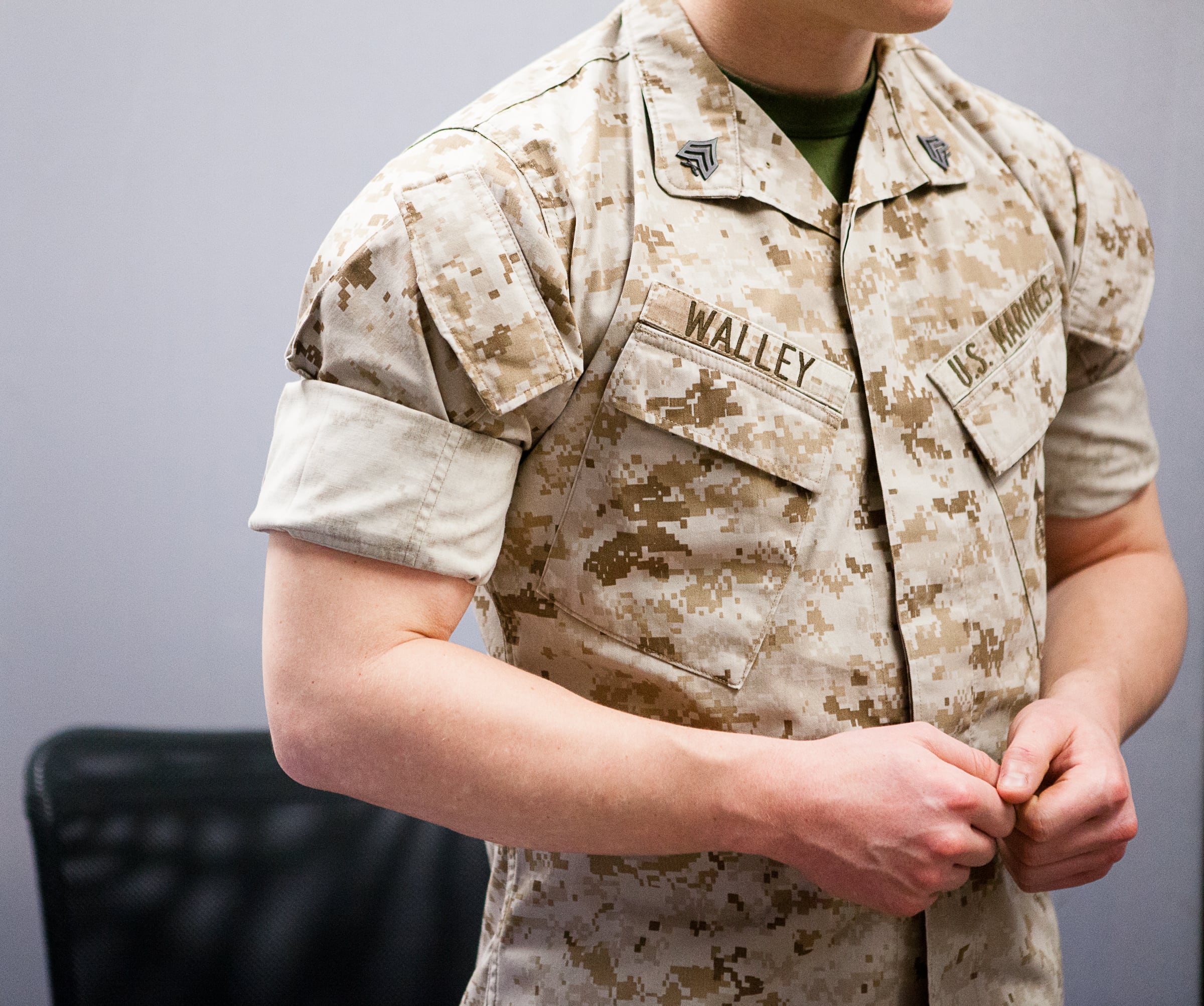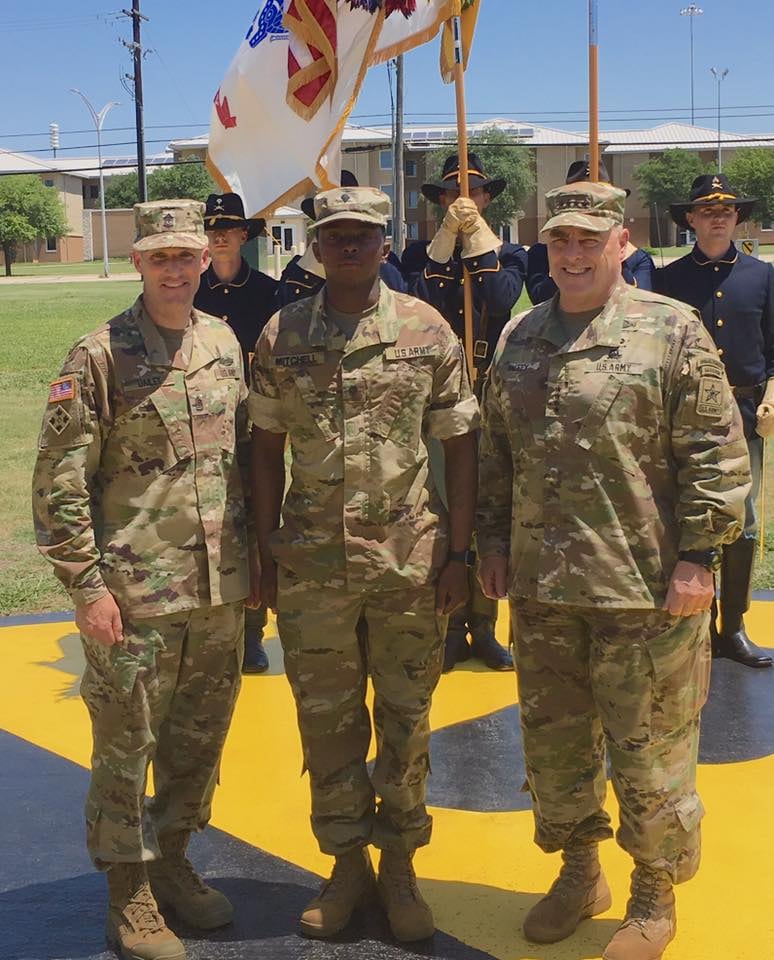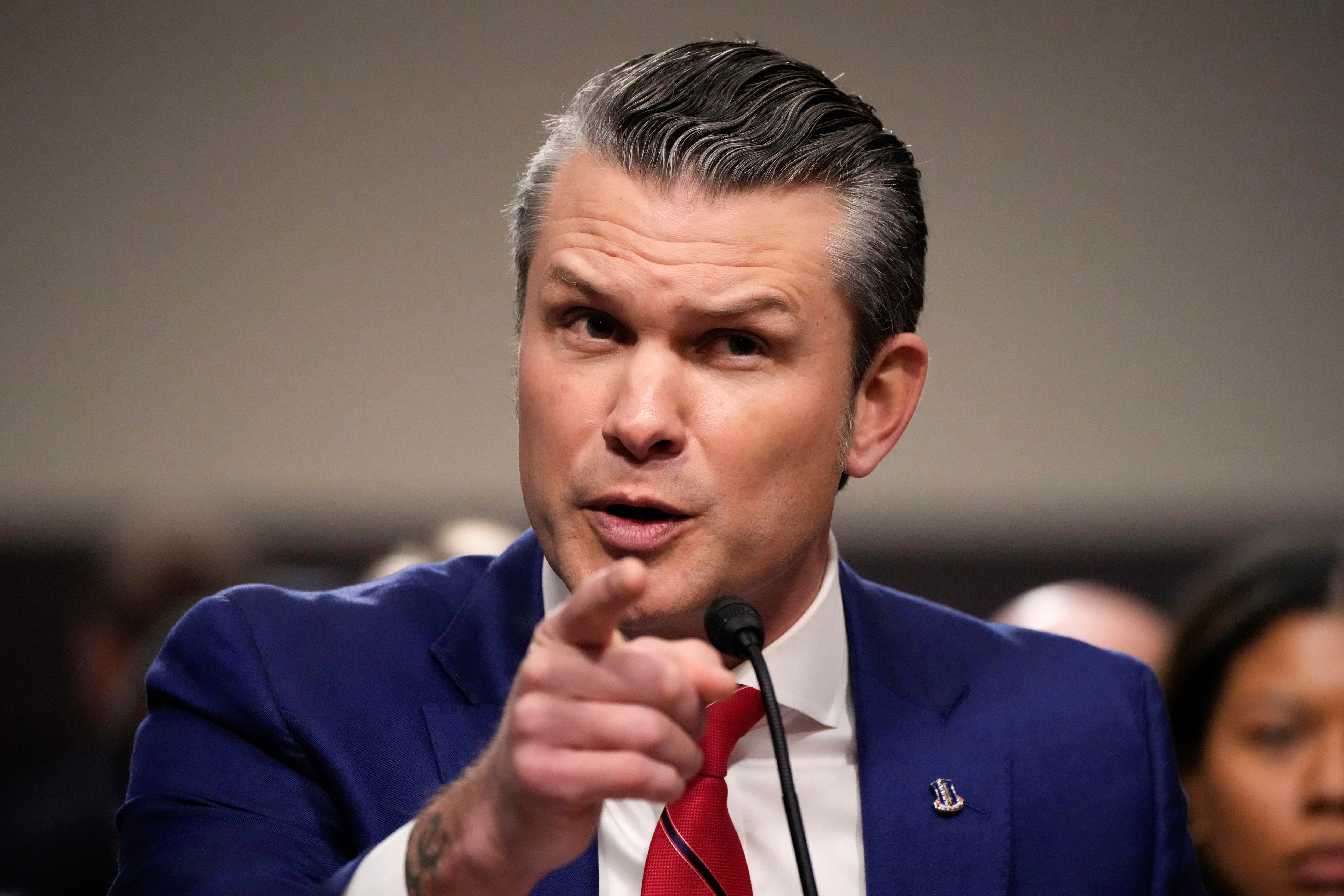Photographic evidence is beginning to trickle in, enough to satisfy even the harshest skeptics: Yes, the Army is letting soldiers roll up their sleeves.
But don't go spray-tanning your forearms just yet: There are limits to who, when, where and for how long the sleeve-rolling can take place. Here's a breakdown of everything we know so far:
1. Who and where: Soldiers on Fort Hood, Texas, are allowed to roll up their sleeves as part of a trial announced by Chief of Staff of the Army Gen. Mark Milley and Sergeant Major of the Army Daniel Dailey. Trial participation started with the 1st Cavalry Division, but it has since been expanded across Fort Hood, at the commander's discretion.
No other soldiers at other installations, regardless of the thermometer reading, can join in.
2. When: The trial will last through Sunday, June 26, an Army official said. The results of the trial could lead to further wear-rule changes, meaning soldiers at other locations could be allowed to roll their sleeves for the rest of the summer. "Future guidance, if any, would be disseminated
through routine command networks and via the [ website with augmentation through Army social media and command information networks," said Army spokesman Lt. Col. Jerry Pionk, in written responses to Army Times' questions.

Anonymous soldier at fort hood shares a rolled-sleeves look
Photo Credit: Courtesy photo
3. How: Maybe you've served long enough to remember rolling up the sleeves of your Battle Dress Uniform, which was phased out in 2005. Those details can stay locked in the memory box — the old roll left the uniform's camouflage pattern on the outside, while the new roll leaves the inside of the uniform facing out. Soldiers who've served alongside Marines may be familiar with the look.
Units on Fort Hood are receiving "localized guidance" on how to roll sleeves.Army Times has not yet seen these instructions.
A Marine video offers these tips:
- Lay blouse face down and fold blouse from bottom to expose name tapes. This will create a crease all the way down the sleeve. This crease will allow you to adjust the size of the roll.
- While pinching the crease at the cufflink, fold the sleeve inside out.
- Continue to roll and adjust the sleeve as needed.
- When finished the roll should be about three inches wide. It should sit about two inches above the elbow.

"The Marine way" of rolling sleeves is unappealing to many soldiers.
Photo Credit: Rachel M. Larue/Marine Corps
4. Restrictions: The trial applies only to the Operational Camouflage Pattern and the Army Combat Uniform — don't get clever with your dress uniform. It applies only for in garrison and requires commander approval.
5. What's next: The Army will look at feedback from the Fort Hood trial before considering any permanent, farther-reaching changes to wear rules.
"Feedback will be submitted through the NCO support chain to the Sergeant Major of the Army," Pionk said.
Dailey told Army Times that Army Chief of Staff. Gen. Mark Milley will be receive the findings and make the final decision.
In a written response, Milley told Army Times he's receptive to direct soldier feedback, if anyone wants to share their thoughts.
"I am always interested in hearing from Soldiers," Milley said in a written statement to Army TImes. "I frequently receive email directly from Soldiers and I answer them directly back. My email is in the global address book that Soldiers have access to."
No word on exactly when that decision will be made. But Sergeant Major of the Army Dan Dailey told Army Times he thought it would be a fairly quick process if feedback is positive.
"There is no major change in uniform, no procurement. This is a quick policy change," Dailey said, comparing this decision to recent moves that allowed earbuds and black socks to be worn with the Army PT uniform.

Spc. Cortne K. Mitchell from 15th Brigade Support Battalion, 2nd Armored Brigade Combat Team, 1st Cavalry Division, with Sergeant Major of the Army Dan Dailey (left) and Army Chief of Staff Gen. Mark Milley (right). Mitchell helped kick off rolled sleeves June 16 at Fort hood.
Photo Credit: Army photo
6. Soldier feedback so far.Army Times' original story reached more than 1.5 million people via Facebook and generated more than 1,000 comments. In general, response was positive. But others complained that rolled sleeves are merely for aesthetics and would do little to cool a soldier in the Texas-heat. Some of the Old Guard wish the service was rolling in the same style as the Battle Dress Uniform, with camo out. Officials note that the Army Combat Uniform's design, with Velcro and pen pockets makes rolling a challenge.
In response to soldiers arguing for camo-out rolled sleeves, Milley said, "That's why we are doing a pilot, to hear from Soldiers about the proposed change. Send your feedback through your NCO support chain and we'll take a look at it."
Army Times is also collecting feedback. Send your thoughts to Army Times Editor Tony Lombardo: tlombardo@armytimes.com
And here are just some of the responses we've received so far:
Happy Soldiers
About time! I always preferred to have my sleeves rolled. So much more comfortable. Hated it when the regs came out to not roll them any more.
— Bob Shabasson
It would be nice instead of pouring sweat all the way down your fingertips.
— Eli Martinez
Having spent a great deal of time stationed in extremely hot climates I agree that troops should be able to roll their sleeves. Stupidity reigned when it was banned.
— Lisa Wililams
I have a feeling there are going to be a lot of Soldiers heading to the gym to increase the size on "them big guns," so they aren't embarrassed when the 1SG says "sleeves up." Haha!
— Louis Juarez Gonzales
The Old Guard
For all you young pups who never wore BDUs ... When in garrison during summer months sleeves were up. Only time they were down was either in the field, or during winter. There was also a transition period when you could wear them up or down. Tropical climates were always sleeves up in garrison. Ohhhh, and if you had camouflage on your face sleeves were down.
— Craig Powers
Now the younger guys can experience going to formation with their sleeves unrolled when they were supposed to be rolled and that whole scramble. Next they will be bringing back black boots and Kiwi, too.
— Dan Tonner
Funny how the smallest thing can boost the morale like rolling sleeves! I loved it in the BDU's! Performed properly it was a nice appearance and helped!
— Ray Ahner
I was just telling someone this morning I miss the days when they let us roll up sleeves!!! maybe they will bring back spit-shine boots!!!!! It is a dream I have ...
— Stephan Pendarvis
And the Haters
Anything to try and be like the Marines.
— Matthew Kessler
I had a tan line for two years AFTER getting fried with sleeves rolled once.
— Ray Hegarty
It looks unprofessional, period. That's why it needs to be up to the command. If you're not doing manual labor of exerting yourself in support of the mission then you need to always present a professional appearance.
— Nancy Chisholm
I wasn't huge arm-wise but I never could stand my sleeves rolled. It did cut off the circulation
— John Johnson
Well, as long as they roll it the Army way again, and stay away from the cheap Marine way, I'll feel a little better lol.
— Shawn Proudfoot
Just gonna look stupid. The OCP, UCP, ACU, etc. have those stupid big Velcro patches.
— John Freestone
Kevin Lilley is the features editor of Military Times.
Tony leads a team of more than 30 editors, reporters and videographers dedicated to covering the news that affects service members and their families. Tony is responsible for strategy of the Military Times digital brands, the print publications, video and multimedia projects for Army Times, Navy Times, Air Force Times and Marine Corps Times.





